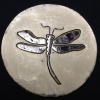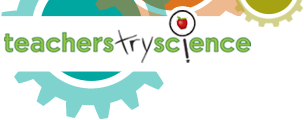Print out the power point slides one slide per page.( I suggest running through the activity once yourself to be sure you will have enough of each piece for each lab group.)
Use different colors of copy paper for each group of molecules, for example, the photosystems and the cytochrome complex should all be one color. The electrons, photons and hydrogen ions should all be different colors.
You can cut out all of the pieces ahead of time or have the students cut them out. You decide based upon the time you have.You can also assign the cutting for homework and have the students bring in the pieces on the day you will conduct the activity. I have laminated the copies before cutting them so that they can be used from year to year after they are cut out the first time.
Make several extra copies of the slides of Hydrogen ions, Photons, and Electrons so that you have plenty for the students to use during their re-enactment of the process. You will want them to show where the electrons are lost and gained and where water is broken down and hydrogen ions and oxygen are released.Tell the students that they should cut out the photosystems and the ATP synthase in the shapes they see in their textbook. This gives a better visual for the activity.
Students should use the yarn to form the outline of the thylakoid membrane which would also delineate the area of the thylakoid space and the stroma. They should cut the labels down and use them to identify these areas before they set up anything else, then they need to insert the photosystems and electron carriers.
After the set up is complete the students should work with their partners to practice demonstrating the steps of the light dependent reaction until they can perform it for the teacher. EACH student should walk through the process, moving the photons, electrons, hydrogen ions and ADP-ATP molecules while explaining what is happening. They will get much more out of it this way than if they took turns and only discussed one or two steps.
EXTENSION: Have the students use another piece of the yarn to outline the Calvin cycle and the last slides in the powerpoint to summarize the use of carbon dioxide, Rubisco, ATP and NADPH to produce the sugar, glucose. Be sure to discuss how the products of the light dependent reaction are used in the calvin cycle, then sent back to the light reaction to be "recharged". (ADP -ATP and NADP+ -- NADPH)

